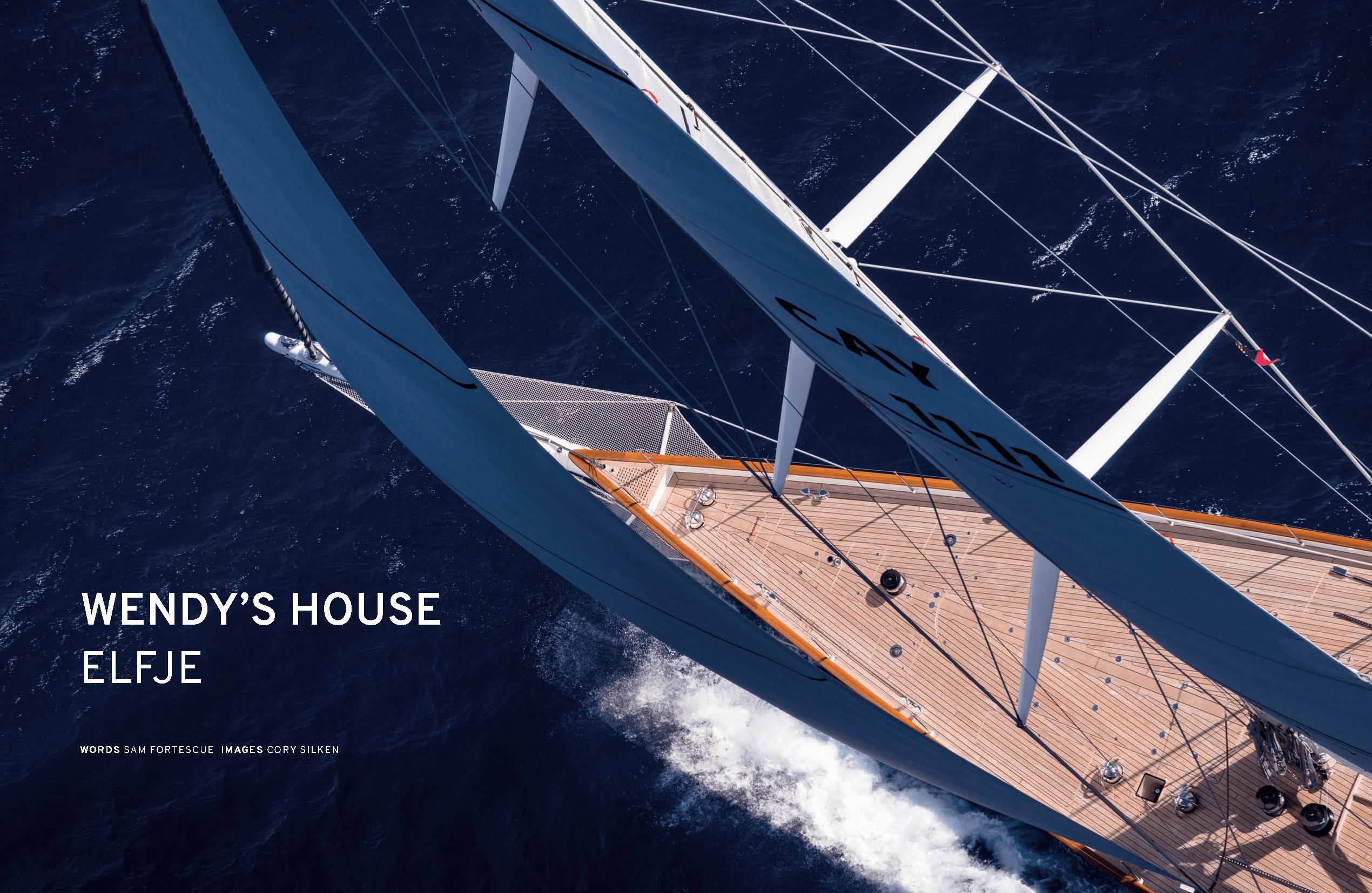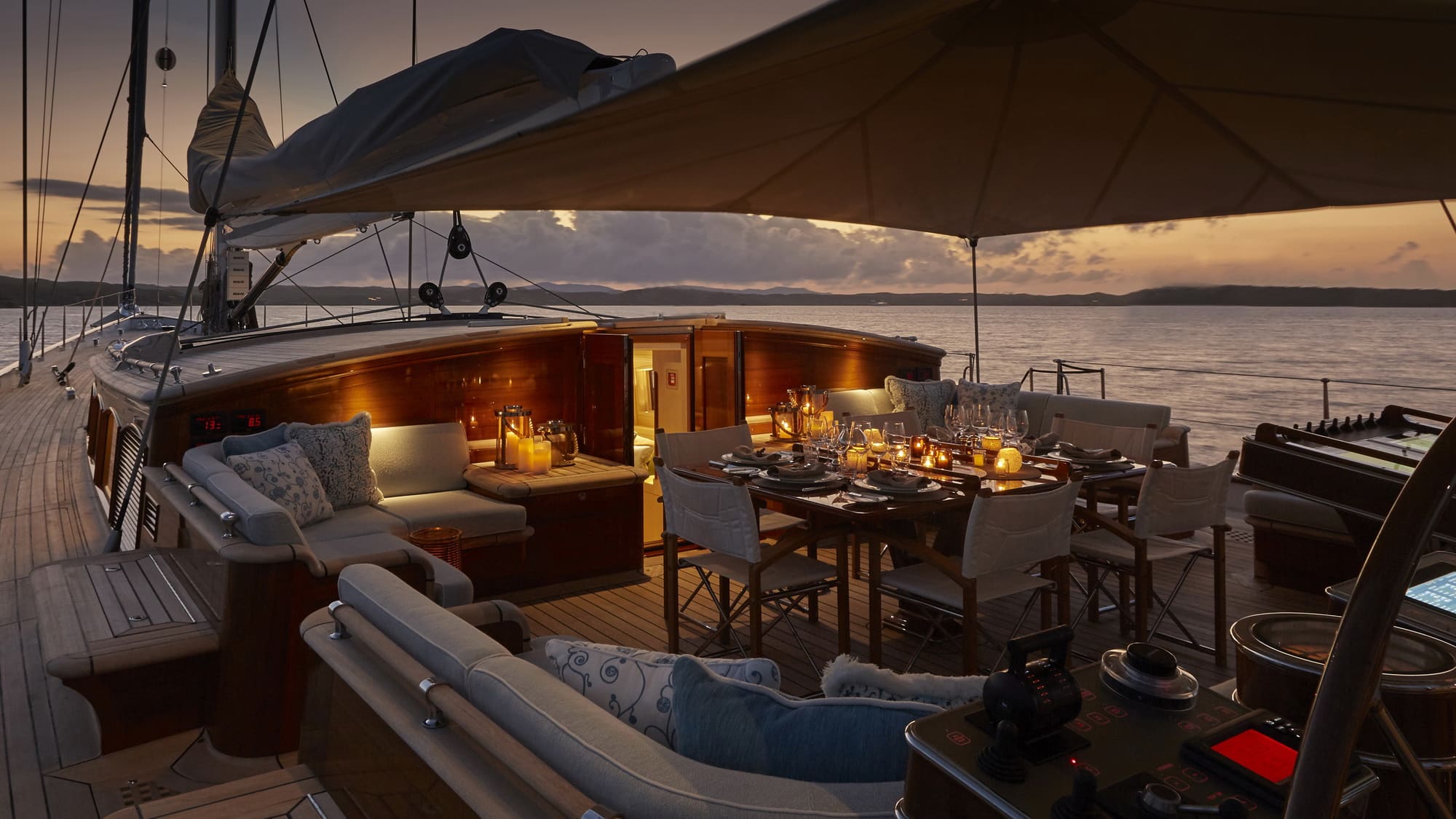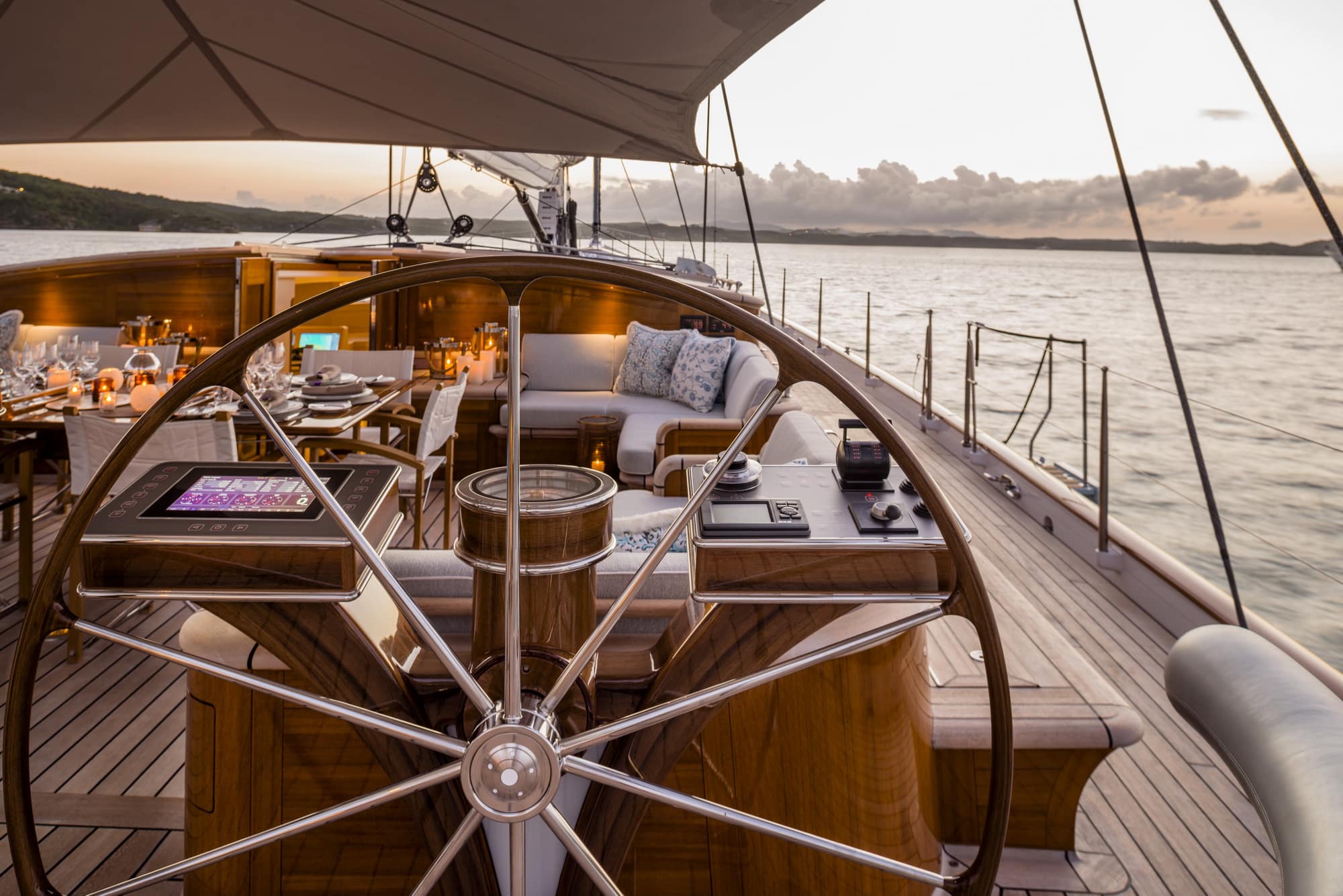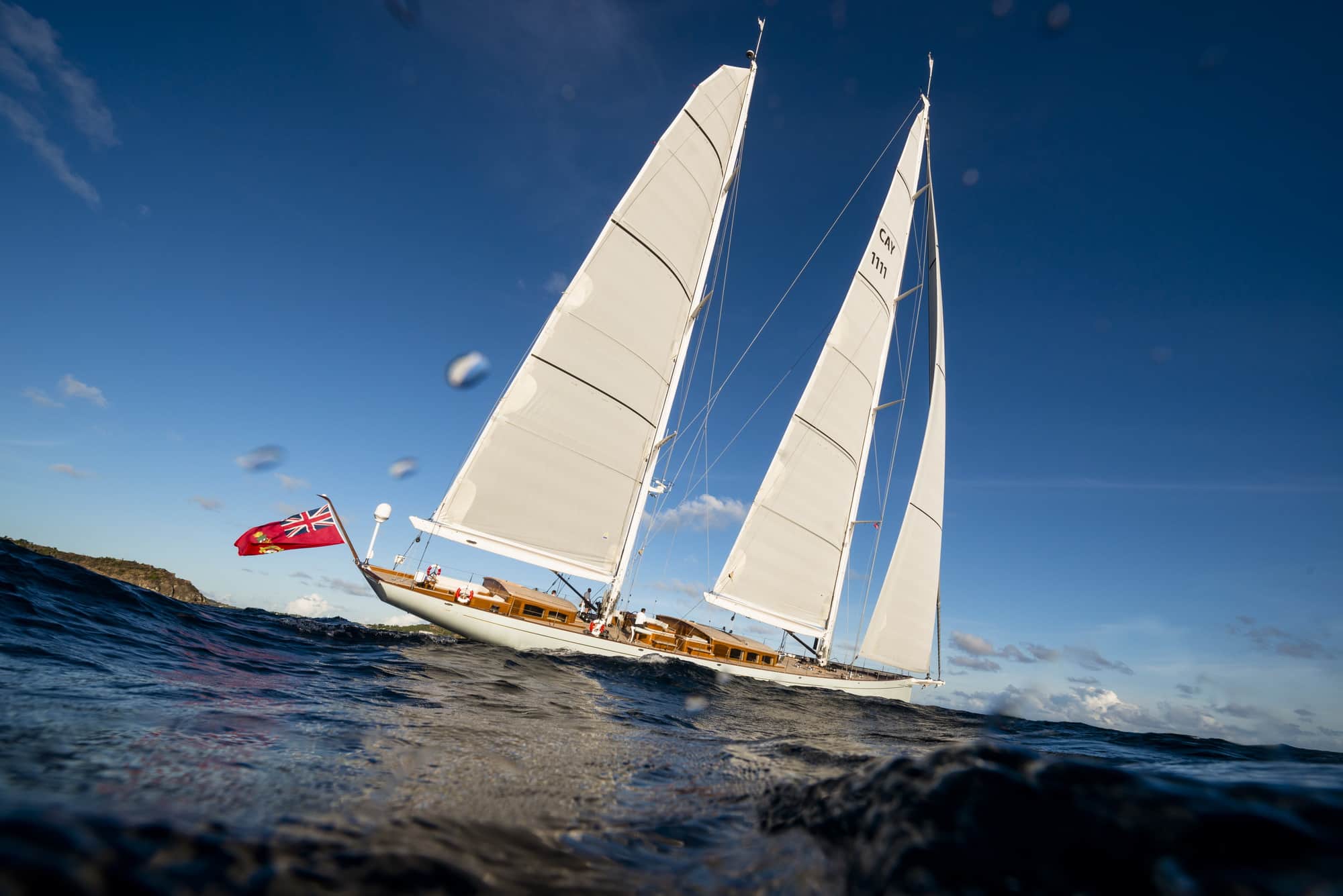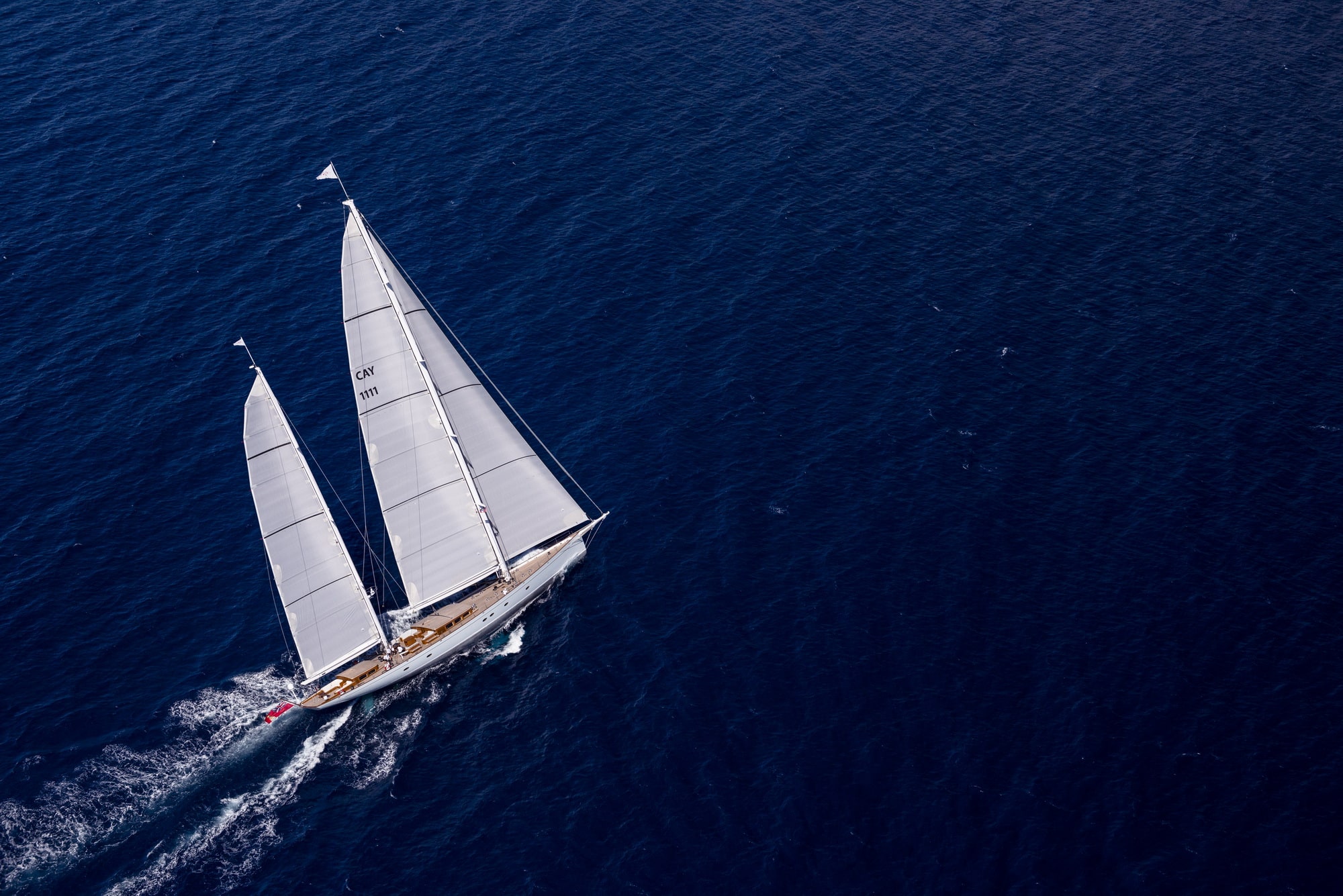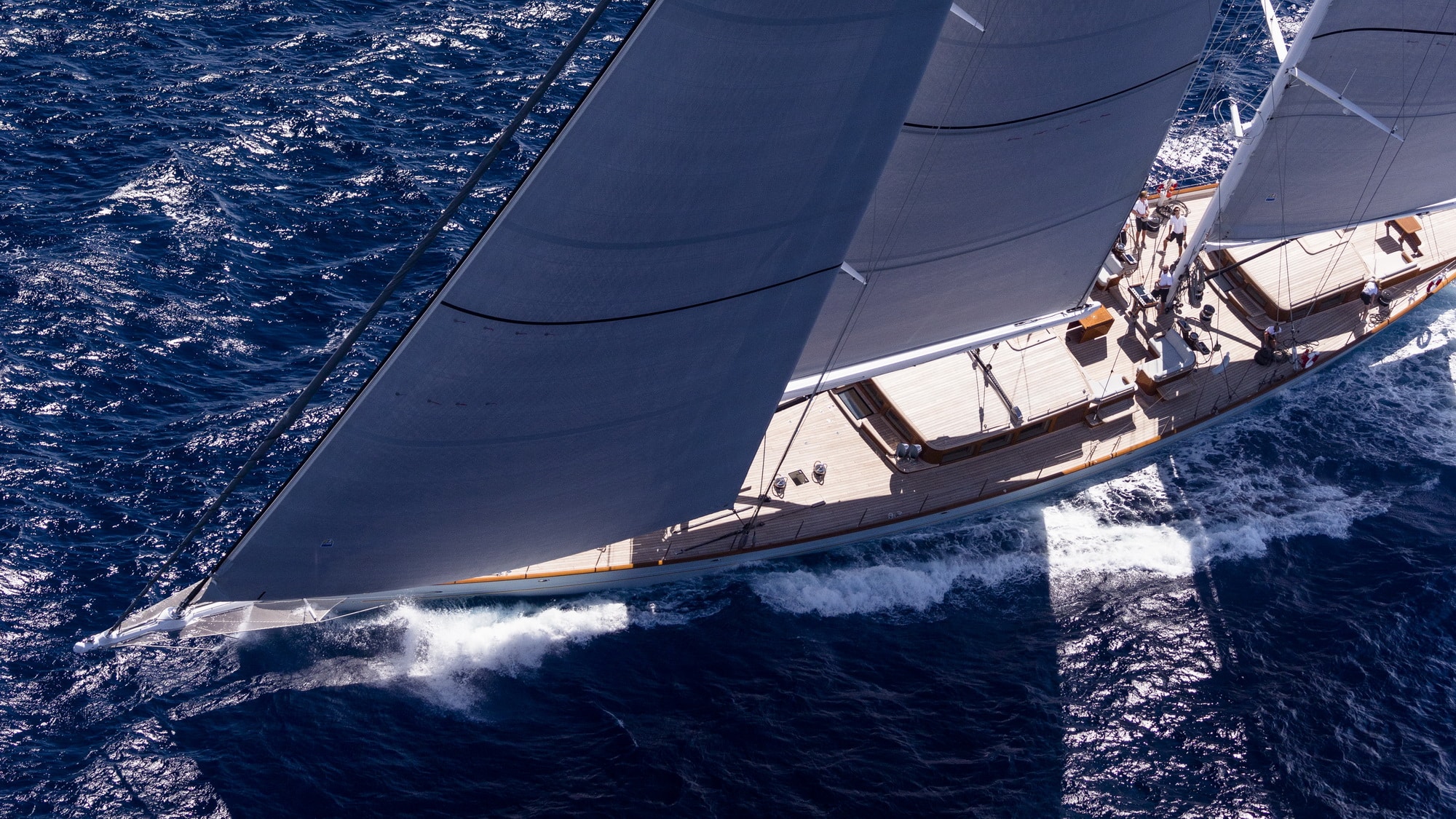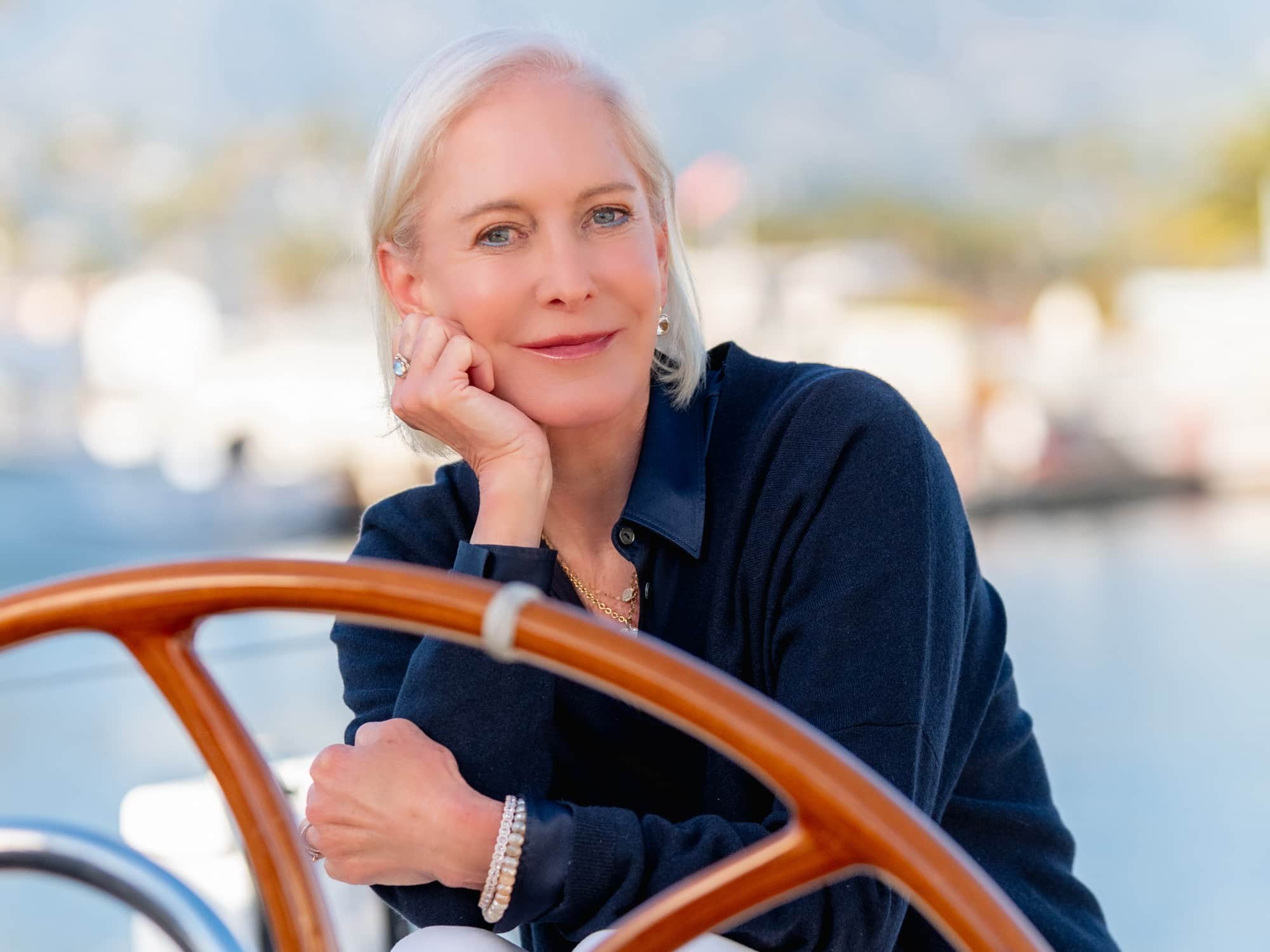Sometimes the joy is almost as much in the journey when creating a beautiful boat.
Article published by TIDE Magazine (issue 7, 2024)
Wendy Schmidt’s first sailing experience did little to foreshadow the role that boats would later come to play in her life. In fact, I can almost hear her shrugging when I ask her about it. “I have a memory from my childhood when I was nine years old,” she recounts. “We took a family trip to Bermuda – it was the only aeroplane trip we ever took. My three brothers were in the cockpit of a 20ft sailboat on some sort of tourist experience. I’m sitting behind – my head is tossed back and I’m super relaxed. I was having a different experience to them.”
It would take another 42 years before Schmidt sailed again. Yet today she is the owner of multiple boats, from wooden motor launches to carbon-fibre racers. One of the fleet stands out in particular: the 46m Elfje. With her 6m-long bowsprit, towering ketch rig and pilot cutter looks, she is easy on the eye in the same way as all the great classically proportioned yachts. Make no mistake, though: this is a decidedly modern boat that was delivered as recently as 2014.
Her creator, along with Schmidt herself, is Dutch designer André Hoek. His studio, in an old orphanage in the town of Edam, is one of the best in the world at combining the beauty of classic lines with stateof- the-art naval architecture – and it is this which imparts Elfje’s unmistakable character. “She’s one of the favourites in our design office – of our achievements,” says Ruurt Meulemans, partner at Hoek Design. “Elfje came out really nicely sailing-wise and in aesthetics. Wendy gave us plenty of opportunities to excel.”
Schmidt remembers how the idea of Elfje grew out of the positive experience of her friend Bill Joy, who was building 58m Ethereal at Royal Huisman at the time. “In some sense, we chose the yard before we had chosen someone to design it or even knew what kind of boat we would build,” she says. “There is a whole community around Huisman.
“Then we interviewed all the leading design firms and fell in love with André Hoek. He had aquarelle when we realised that we were talking to an artist and thought, ‘he’s the one for us’.” Schmidt then went on to choose Redman Whiteley Dixon for the interior.
Now, having appointed some of the world’s pre-eminent designers and a yard with a track record in large sailing boats, some owners would have been tempted to hand things off to a management team. But for Schmidt, the three-and-a-half-year project was a reward in its own right, and she instituted full team meetings every six weeks in locations from New York and Nantucket to the UK and the Netherlands. “It became as much of a social experience as it was a technical one,” she remembers. “I insisted in the beginning that we get everyone on the same drawing – it normally goes from department to department, but we thought this gave room for miscommunication. With everybody present, everything can move in lockstep. I like to do all my projects that way – I believe in transparency, openness.”
“It became as
much of a social
experience
as it was
a technical one…
With everybody
present,
everything
can move
in lockstep”
With lines rooted in Hoek’s favoured ‘pilot cutter’ aesthetic, the beauty of the yacht was always front and centre. Thanks to the plumb bow and relatively low freeboard, her twin deckhouses – one containing a guest lounge and the other a dedicated owner’s space – look ravishingly sleek and low-slung. “She is so nicely balanced in the looks and the proportions of the deckhouse,” says Meulemans.
His real focus was below the waterline, however, where five different hull lines were developed. They were all put through Hoek’s CFD [Computational Fluid Dynamics] programme and the best one built as a 6m model for tank testing at the Marin laboratory. “She was going to be a cruising yacht, but she had to do very well on the racecourse as well,” adds Meulemans. “She has a lifting keel and spade rudder.”
The carbon-fibre masts and booms are by Southern Spars, with standing rigging in ECsix. That bowsprit alone is capable of withstanding 150 tonnes of compressive force (that’s the weight of a jumbo jet), with headsail and Code sail furling gear built into its underside. Elfje could have had a sloop rig as well, but the design team felt she would be more manageable as a ketch with more sail settings. “Enjoying your sailing is always in part about the kind of sail combinations you can set in different conditions,” he says.
Elfje was to be an efficient yacht, especially given that Schmidt has long been publicly vocal about the need to protect the ocean and manage its resources better. Under sail, that meant good speeds in low wind conditions, and a rig that could be handled relatively easily. Elfje can manage 7 knots in a 5-knot zephyr. What’s more, by extending the lifting keel to its maximum 7.10m, less weight is needed to achieve the required righting moment. When retracted to just 4.50m, the boat can access the world’s Superyacht marinas and anchorages.
Technically, it’s a similar story. Royal Huisman calls her a NextGEN Ketch, because she benefitted from a new way of thinking about power management on board. The key here is her variable speed generators, which are lighter, quieter and up to 10 per cent more fuel-efficient than their conventional counterparts. A large lithium battery bank can mop up any excess power or boost generator output when demand is high.
“People got quite excited about the innovations on the boat,” says Schmidt. “It’s not that cutting-edge today, I wouldn’t say that. With the variable speed generator our goal was [to be] lightweight and efficient. We also have a generator on the main engine drive shaft so that when we’re under way, we don’t have to run the main generator. These big changes have held up.”
Delivered on deadline and to budget, Elfje wasted no time by scoring a joint first place in her inaugural Bucket Race, where she crossed the finish line neck-and-neck with 55m Adela. She has appeared at a couple of subsequent Buckets too, but it’s fair to say that this sort of racing is not Schmidt’s cup of tea. “We had up to 45 crew on board with the spinnaker, and to me it became a little more than it was worth as an experience,” she says. “When you’re racing in a Superyacht regatta, you announce on the radio five minutes beforehand that you’re planning to tack. It’s very procedural.”
Schmidt prefers to race her other boats, including the new 26m carbon-fibre flyer Deep Blue. The strength of Elfje is as a cruising yacht. “She’s wonderful to have as a mothership,” says Schmidt. “She is very elegant; very easy. The interior is comfortable – we were thinking almost ‘beach house’ – very counter to the polished mahogany of these big boats. We wanted to feel fresh air and light. I didn’t want to run into corners everywhere, so the furniture is rounded.”
Redman Whiteley Dixon describes its concept for the boat as “between traditional and modern, freshly interpreted for modern living”. The cabins play with textures including linen, silk, velvet and cashmere, while European walnut and light oak make up the flooring and cabinetry throughout. Great attention was paid to the progression of different spaces internally. The owner’s private suite is positioned aft with its own deck lounge and a saloon featuring a so-called “oculus table” – a window panel in the hull that allows you to watch the seabed and sea life below the boat.
“Delivered
on deadline
and to budget,
Elfje wasted
no time
by scoring a
joint first place
in her inaugural
Bucket Race”
Besides the owner’s magnificent suite, there are two dedicated guest cabins. Four crew cabins are finished to similar standards as the guest areas. “I wanted all the crew areas on the boat to feel just as homey [with] the same materials – we didn’t downgrade the materials in the crew quarters.”
For someone who only came to sailing in her 50s, Wendy Schmidt has done more than most to pursue her passion. She says she always loved the sense of the wind, but suppressed her earliest sailing experience, thinking it was an activity that she didn’t have access to. How that’s changed. And yet, the excitement of her very first outing is still there in the way she speaks about her favourite boat. “All sailing gives you a connection to your environment – but on Elfje it’s a very direct feedback system. It’s a feeling of quiet power.”
Ocean philanthropy
Wendy and her husband Eric Schmidt have been very active in philanthropy. Through the Schmidt Family Foundation and other philanthropic initiatives, the couple has pledged billions of dollars for a vast array of projects and issues, ranging from human rights and clean energy to environmental journalism and scientific research.
Ocean health is also a big part of the mix, through the Schmidt Ocean Institute, which offers the 111m research vessel Falkor (too) to scientists worldwide for free to conduct marine research in exchange for making their findings publicly available. In 2010, Wendy launched 11th Hour Racing to combine her love of sailing and concern for ocean health. Competing on some of the biggest stages in sail racing, the 11th Hour Racing Team that she sponsors has had impressive results – notably winning the gruelling Ocean Race last year (2023) with Charlie Enright at the helm.
“The platform of The Ocean Race, and partnering with them as a sustainability partner, helps to drive new practices throughout the whole organisation,” says Schmidt. “You get the microphone when your team wins!” Her 11th Hour had a measurable impact on the race, with zero-waste race villages and seawater sampling equipment carried on the boats. “The data that has been coming in has been unprecedented.
These are very remote places where your nearest human is in the Space Station. When you’re finding plastics here, it’s telling you something about the scale of the problem,” finishes Schmidt.
Winners of The Honours announced
27 September 2023
Congratulations to the winners of The Honours, which recognise the world’s most inspirational people in superyachting. The first three recipients of a coveted Bowsprit award were celebrated at the inaugural Honours event in Monaco. Ocean conservation advocate and philanthropist Wendy Schmidt, superyacht First Officer and industry DEI proponent Jenny Matthews, and business strategist turned Director at YachtAid Global Zoran Selakovic were feted at a special dinner event.
The Honours was conceived as an opportunity for the superyacht industry to recognise the extraordinary people making a difference behind the scenes, taking the focus away from the yachts and placing the spotlight firmly on the good that happens in the day-to-day superyachting life.
Read on and find the Q&A with Wendy Schmidt, winner of The Honours, at this website: news > inhuis stories & updates [link]

